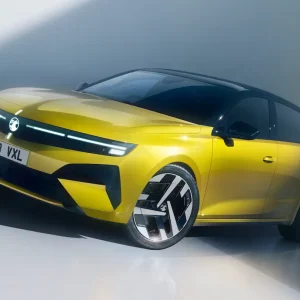The upcoming 2030 ban on the sale of new internal-combustion engine (ICE) cars and vans is a key date in the journey towards low-emission vehicles and one that motorists need to be aware of. Many drivers will be looking to make the switch to EVs before then – but this process requires careful planning and plenty of education.
If you find yourself shopping for a new car and you’re serious about reducing your carbon footprint, you should consider getting a plug-in hybrid (PHEV). You won’t be alone: in 2021, demand for hybrid vehicles has risen by 78%. The PHEV features a mains-rechargeable battery that provides a typical range of around 25-30 miles. Once that range is depleted, the vehicle then operates as a full hybrid, using a combination of combustion engine and electric motor assistance to power forward.
What’s more, the UK Government has been as clear as they can be that the most energy-efficient hybrid vehicles will not be banned from sale until 2035. For this reason, they could serve as a key stepping stone for drivers looking to switch to an EV in the future, but are not quite ready to make the move just yet.
So, what are the key things to consider with a PHEV?
How fuel efficient is a plug-in hybrid?
According to Emissions Analytics (EA), the average PHEV offers 37.2 mpg in fuel mode, once its electric range is depleted. This figure, however, is subject to change based on driver behaviour. PHEV drivers who charge regularly and drive primarily within their vehicle’s electric range can achieve greater fuel efficiency than EA suggests: PHEVs driven 25% in electric mode can reach up to 49.6 mpg, while those driven up to 75% in electric mode can achieve 148.8 mpg.
When it comes to reducing emissions, these figures are a critical element in the benefits of PHEVs. If all of the UK’s PHEVs were driven at 50% electric motoring for half of the country’s average annual mileage, CO2 emissions would decrease by 130,760 tonnes compared to not charging at all. That’s equivalent to the annual CO2 output of 83,000 petrol-powered cars.
How cost-efficient is a plug-in hybrid?
While fuel efficiency is a natural concern for professional drivers, it’s not the only consideration to be made when weighing up the switch to a hybrid. For most drivers, cost will also be a deciding factor.
If cost of purchase is at the front of your mind, it’s worth researching costs for both hybrid and full electric. In some cases – such as the Volkswagen ID3 and its hybrid counterpart, the Golf GTE – the fully electric vehicle is cheaper to purchase than its hybrid equivalent, so it may be more cost effective to make the move directly to EV.
When considering running costs, it’s worth noting that cost per mile calculations for PHEVs involve more elements than that of an ICE vehicle. But when operated to maximum efficiency, hybrids are proven to be cheaper to run than petrol cars.
Since charging an electric vehicle battery isn’t free, cost per mile calculations for hybrids need to include the cost of energy to power batteries. As with the fuel efficiency, cost per mile depends on usage. However, at the average UK charging cost of 17.4p/kWh, a PHEV will cost around £2 to fully charge. This rate allows drivers to optimise the cost efficiency of their car based on how they use its electric capacity. For example, those who drive at 50% electric mode will pay 11p per mile, while the cost per mile at 100% electric mode is only 7p.
Are there any Government-led incentives?
Driving PHEVs doesn’t just benefit the environment – there are also great incentives for drivers to make the switch. The Office for Zero Emission Vehicles provides up to a 75% grant to support home chargepoint installations, and can offer support to drivers who are committed to taking the next step towards zero emissions.
PHEV drivers can also reap tax benefits. Vehicle Excise Duty (VED) incurs only a £10 first year rate for vehicles with CO2 emissions rates between 1g/km and 50g/km, and all hybrids are eligible for the reduced yearly rate of £145 from the second year. Plus, if your vehicle’s list price is less than £40,000, you’ll be exempt from the £310 annual supplement rate for the first five years. For the same CO2 rates, businesses can write off 18% of the vehicle purchase price, or 100% of the lease rate.
A Stepping Stone to EV Adoption
The automotive industry is rapidly moving towards a less fuel-dependent economy as we prepare for the 2030 ban. And with so many cost-efficient options on offer, making the switch to low emission vehicle has never been easier. So, if you’re not quite ready for an EV, that doesn’t mean you can’t cut your carbon footprint. Options like PHEVs will allow drivers to customise their commitment to the environment and the UK’s net zero goals, at a pace that suits their individual needs.
Matthew Walters is head of consultancy services and customer value at Leaseplan UK





